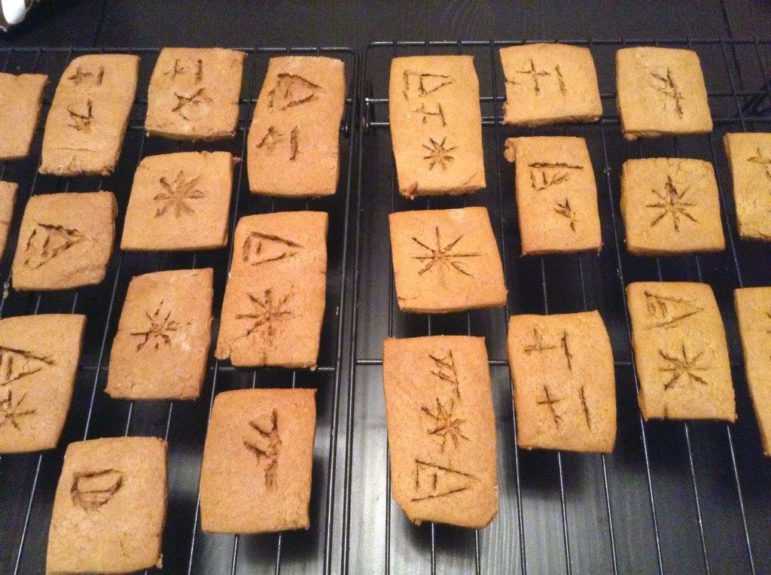(RNS) Katy Blanchard had an idea when the office holiday party rolled around last year.
As the “keeper” of Near Eastern Collections at the University of Pennsylvania’s Museum of Archaeology and Anthropology, she works with cuneiform — clay tablets inscribed with ancient pictograms from languages such as Akkadian, Hittite and Elamite.
They look just like gingerbread cookies, she thought. And really, who doesn’t want a little ancient clay tablet for dessert?
Thus was born the latest craze in the scholarly world of antiquities — cuneiform cookies: rectangular gingerbread inscribed with ancient words for things like “God,” “build” and “sun,” all words Blanchard put on her creations.
Since Blanchard rolled out her first batch, her recipe and technique — a scalpel-like tool is required — have been passed around via the internet and social media until finally reaching the world of the noncuneiform-obsessed with stories in The Forward and The New York Times and on BBC News.
Blanchard has attracted fans and copycats. Cuneiform, she told The Forward, “is fun.”
“If it’s cuneiform cookies, or a brownie ziggurat, or I recently cross-stitched our famous bull-headed lyre from Ur,” she said of an object in the museum. “I want these things to be part of everyone’s everyday life.”
Here, for the obsolete language-obsessed on your holiday gift list, is Blanchard’s recipe for cuneiform cookies.
Meanwhile, she is plotting her next foray into the archaeo-culinary realm. She told the BBC she was planning to make a sugar cookie decorated with the Forma Urbis Romae — an ancient marble map of the city of Rome.
“Everybody loves something ancient in their kitchens during the holidays,” she said.






